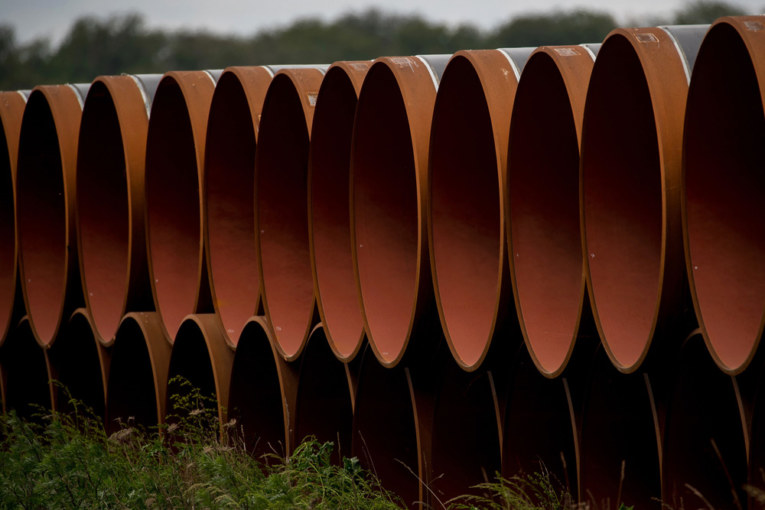
The Canadian oil lobby’s rosy forecasts for surging oil production against all odds in the past few years have finally been worn down by regulatory uncertainty and congested pipelines.
The Canadian Association of Petroleum Producers’ latest annual report reveals a tempered outlook, with oil production set to increase by 1.27 million barrels to 5.86 million barrels a day by 2035 from 4.59 million barrels per day in 2018 — a growth spurt considerably lower than the 6.4 million bpd predicted in the 2014 edition of the report.
Capital spending in the oilsands is also set to decline for the fifth consecutive year to $12 billion, a mere third of what was predicted four years ago. Oil producers are also expected to drill fewer wells as pipeline bottlenecks continue to be a drag on sentiment.
Canadian pipeline capacity currently stands at four million bpd, as the industry awaits approval of the 830,000-bpd Keystone XL pipeline connecting the oilsands to the Gulf Coast, and the 370,000-bpd Line 3 Replacement conduit to refineries in the MidWest, both of which have been stuck in U.S. regulatory reviews for years. The industry is expecting a decision from Ottawa on the West Coast-bound Trans Mountain’s 590,000-bpd expansion on June 18.
Amid the constraints, the overall capital investment in the oil and gas sector is expected to see a downward spiral, falling to $37 billion this year from the buoyant $81 billion in 2014.
“With global demand for crude oil expected to grow through to 2040, Canada has the opportunity to reclaim over $40 billion of investment if it addresses the key challenges surrounding access to international markets and regulatory and fiscal policy both federally and provincially,” CAPP said in its report.
CAPP cited pipeline constraints, a lack of market diversity and inefficient government regulations as reasons for its beleaguered forecasts.
“We are positioned to be a leading supplier of the most responsibly produced oil and natural gas on the planet, but our lack of pipelines and inefficient regulatory reality means that other suppliers, with lesser environmental and social standards, are taking our market share,” said Tim McMillan, CAPP president, in a press release.
Total Western Canadian supply, including diluent volumes, is now expected to reach 6.34 million bpd by 2035, from 4.66 million in 2018 — a far cry from the 2014 projection of 7.5 million by 2030.
The softened estimates forecast for Canadian oil comes amid a predicted increase of global oil demand to 106 million bpd by 2040, from its current level of around 100 million bpd, according to the International Energy Agency. The global energy watchdog projects oil to remain a force in the global energy mix, comprising 27 per cent of world energy demand by 2040. In addition, global capital spending is projected to reach over US$500 billion by the early 2020s.
The predictions are also in line with a June 5 report from IHS Markits, which called lower annual growth rates for oilsands “the new normal.”
IHS Markits cited similar reasons for the decrease in annual growth.
“Large scale oilsands projects take two, three, four or more years to be brought online and so the reality of a slower pace of investment and growth in the Canadian oil sands is taking shape,” said Kevin Birn, IHS Markits president, in a press release.
… the reality of a slower pace of investment and growth in the Canadian oil sands is taking shape
Kevin Birn, president, IHS Markits
“Yet, ironically the call on Canadian heavy sour crude oil — the principal export from the Canadian oilsands — has never been greater as the rapid deterioration of Venezuelan output tightens the supply of heavy sour crude globally.”
IHS Markits also predicts that future growth will come mainly from existing projects.
“The key to unlocking further upside growth potential in the Canadian oil sands will be the ability of the government and industry to restore confidence that the crude oil produced in western Canada can get to markets at a reasonable transportation cost,” said Birn.
From an investor perspective, the outlook is practically grim, says Jeremy McCrea, an energy analyst at Raymond James.
“Investors are starting to believe there may be one or two more pipelines ever to get build in Canada. You see from organizations like IHS, investors don’t even believe those forecasts, given the valuation in some of these stocks,” said McCrea. “Whatever official growth forecast you see right now, investors believe it is much, much lower just because there’s a real lack of faith that a pipeline will actually get built here.
CAPP also noted other uncertainties bogging down the industry, such as the United Nations’ International Maritime Organization’s new regulations on sulphur emissions, requiring them to fall to 0.5 per cent from 3.5 per cent by 2020.
You can read more of the news on source
